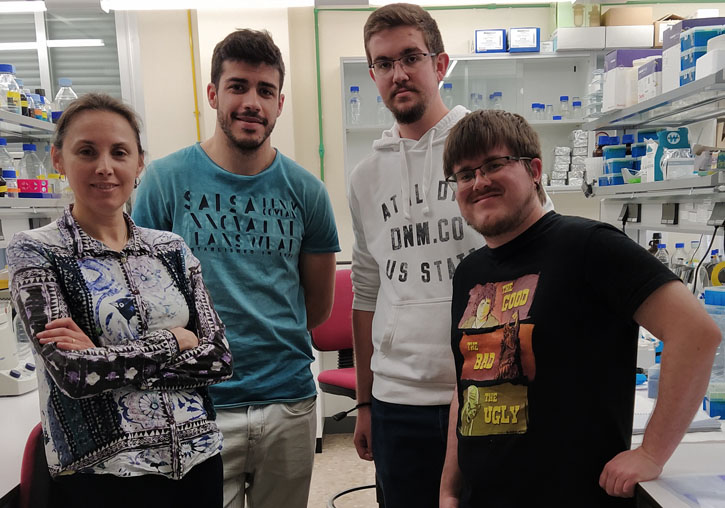
Researchers from the Institute of Biotechnology and Biomedicine of the University of Valencia, together with researchers from the Biomedicine Institute of Valencia (IBV) and the National Centre for Biotechnology (CNB) of the CSIC (Spanish National Research Council) and the Autonomous University of Madrid (UAM), have provided new information on the mechanism used by the RcsB protein of the Salmonella pathogen to control gene expression. The study is coordinated by professor Patricia Cansino.
Structural and functional approaches combined with transcriptomics and bioinformatics have been used to obtain new findings. Results have been published on the Nucleic Acids Research journal.
RcsB is a protein that binds to DNA in order to control the expression of genes whose products are necessary to reorganise the cell envelope architecture in response to external damage. RcsB receives signals from other proteins in the envelope that act as antennae, constituting the so-called Rcs system, which is conserved in the Enterobacteriaceae family. Some of the processes that this system controls are movement (flagellar synthesis) and the formation of a protective exopolysaccharide capsule. This study has visualised the binding of RcsB to DNA, stabilised through phosphorylation to specific DNA sequences. This enabled the identification of the recognition sequence that explains their binding specificity. This sequence (known in jargon as “box”) was searched throughout the entire Salmonella genome, finding more than 200 binding sites. More than half were located in regions with protein-coding information.
Moreover, a RNA mass sequencing analysis was carried out with different mutant variants of RcsB in catalytic residues that modulate its phosphorylation. Changes in the expression levels of hundreds of genes, some related to iron metabolism and previously unrecognised as being under the control of RscB, were observed. Lastly, data obtained by the RNA sequence analysis and genomic mapping was cross-referenced, which confirmed the RcsB binding to these regions.
The study has shed light on how RcsB could control the expression of such a high number of genes in response to envelope damage and has revealed new genes controlled by this potential target for new antimicrobials.
--------------------
Reference article:
Huesa J, Giner-Lamia J, Pucciarelli MG, Paredes-Martíınez F, Garcíıa-del Portillo F, Marina A and Casino P (2021) Structure-based analyses of Salmonella RcsB variants unravel new features of the Rcs regulon. Nucleic Acids Research DOI: 10.1093/nar/gkab060







